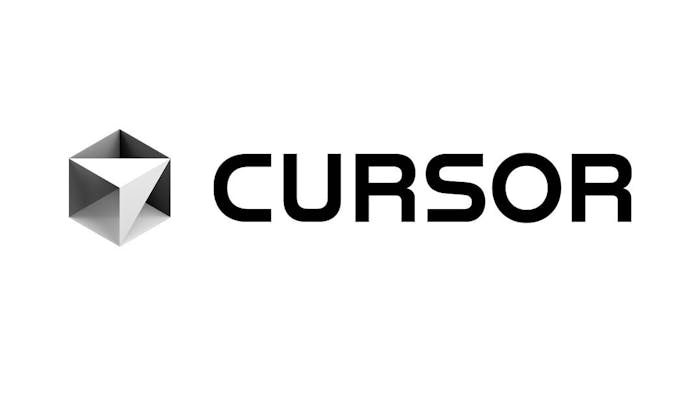Our Goal
We have thoroughly compared the dense privacy policies of today’s most popular AI programming to help you understand the critical privacy risks developers must be aware of. For instance, violating Anthropic’s commercial terms can get your API access revoked—the exact scenario that cut OpenAI off from Claude. Meanwhile, Cursor’s free tier uses your code for model training by default, as its ‘zero-retention’ feature is opt-in. We provided a comparison matrix for 7 top tools below, covering data retention, copyright assignment, and credential safety.
Quick Comparison: Which Tool is Best?
| Criteria | GitHub Copilot | Cursor | Claude Code | Windsurf | Gemini CLI | Augment Code | Replit |
|---|---|---|---|---|---|---|---|
| Credential Safety | |||||||
| IP Indemnity | |||||||
| Retention Period (Free/Individual Plan) | |||||||
| Retention Period (Paid Plan) | |||||||
| Retention Period (Team/ Enterprise Plan) | |||||||
| Training Usage |
Factors to consider in a AI-Programming Tool
FAQ:
- Credential Safety: Will they upload my credential to the server for model training usage?
- Copy Right: Is the code own by me while using their service?
- Data Retention: How long does the data retention if they store our code in their server?
1. Credential Safety
Threat: AI assistant’s model potentially collect and scan the code that contains hardcoded credentials even users do not include in the prompt. The secret is then used in the model’s training data, creating a risk that an attacker could extract it via prompt injection, leading to a service breach.
Q&A:
No, these files only manage version control and do not stop an AI tool from reading an open file in your IDE.
Use a configuration file like .aiexclude, if available, to specify paths for the AI assistant to ignore.
2. Copyright
Threat: An AI tool generates code derived from a copyleft-licensed project. Integrating this into a proprietary product can cause license contamination, legally requiring the company to open-source its code and creating IP risk.
Q&A:
IP Indemnity is a provider's promise to defend you against copyright lawsuits from using their code, though specific terms and limits apply.
Not necessarily; a safer approach is using tools from providers that offer IP indemnity to transfer the legal risk.
3. Retention Period
Threat: Proprietary code submitted to an AI service may be stored on the provider’s servers, creating a risk of intellectual property exposure in the event of a data breach.
Q&A:
Select a provider or plan with a "zero-data retention" policy to ensure prompts are not stored after processing.
It guarantees the provider deletes your prompts and code after processing, offering the most secure option.
Use self-hosted or on-premise AI models to keep proprietary code within your own infrastructure.
Tools
Q: What is the retention period for different data types?
- Prompt data: 28 days for IDE access, not retained for other access methods
- Engagement data: Kept for two years for service improvement and abuse detection
- Feedback data: Stored for as long as needed for intended purpose
Q: What is the default training option?
- Individual tier: No training by default, with public code filter and code referencing
- Business tier: No training by default, with user management and data excluded from training
Q: How does credential protection work with exclusion settings?
-
Supported exclusion patterns: Repository-level content exclusion with path patterns like "
secrets.json", "secret*", "*.cfg", "/scripts/***" - Credential confidentiality measures: User configurable settings for organization and enterprise-wide exclusions
Q: What deployment options are available?
- Deployment type: Cloud-based only, no self-hosting option
- Infrastructure requirements: Microsoft Azure servers for all processing
Q: What IP-indemnity protection is provided?
- Copyright claim defense: IP indemnification when Copilot filtering is enabled (ON by default)
- Legal coverage scope: GitHub and Microsoft extend IP indemnity and protection support to customers
Q: What is the retention period for different data types?
- Prompt data: Zero retention with Fireworks, OpenAI, Anthropic, Google Cloud Vertex API, and xAI agreements
- Engagement data: Zero retention across all infrastructure providers
- Feedback data: Zero retention, no data stored by model providers
Q: What is the default training option?
- Default mode: Training enabled by default, code data may be stored for inference speed
- Privacy mode: Guaranteed no training on user code, forcibly enabled for team members
Q: How does credential protection work with exclusion settings?
- Supported exclusion patterns: User configurable exclusion settings with .cursorignore file support
- Credential confidentiality measures: .cursorignore file support for excluding sensitive files and directories from AI processing
Q: What deployment options are available?
- Deployment type: Cloud-based only, no self-hosting option
- Infrastructure requirements: Third-party servers (Fireworks, OpenAI, Anthropic, Google Cloud, xAI)
Q: What IP-indemnity protection is provided?
- Copyright claim defense: No indemnity protection provided
- Legal coverage scope: Full ownership of generated code stated in terms of service, but no legal protection against claims
Q: What is the retention period for different data types?
- Prompt data: 30 days default retention, zero retention with API key from zero data retention organization
- Engagement data: Conversation history removed immediately, automatically deleted after 30 days upon request
- Feedback data: Local storage up to 30 days for session resumption, configurable behavior
Q: What is the default training option?
- API usage: No default training for all tiers, only users opt-in for training purposes
- Training policy: By default, Anthropic does not train generative models using code or prompts sent to Claude Code
Q: How does credential protection work with exclusion settings?
- Supported exclusion patterns: No configurable exclusion settings available
- Credential confidentiality measures: User responsibility to remove sensitive data before sending
Q: What deployment options are available?
- Deployment type: Cloud-based only, supported across multiple regions
- Infrastructure requirements: API key authentication, prompt caching enabled by default
Q: What IP-indemnity protection is provided?
- Copyright claim defense: Anthropic will defend Customer against third-party intellectual property claims
- Legal coverage scope: Indemnification for paid use of Services and Outputs generated through authorized use
Q: What is the retention period for different data types?
- Prompt data: Zero-data retention default for team/enterprise plans, takes minutes to hours to delete
- Engagement data: Only profile data stored while using cloud implementations for authentication
- Feedback data: Flagged input stored for potential violations of Acceptable Use Policy
Q: What is the default training option?
- Zero-data mode: User will never be trained on in zero-data mode
- Regular mode: User will only be trained on non-credential data outside zero-data mode
Q: How does credential protection work with exclusion settings?
- Windsurfignore: By default, Windsurf Indexing will ignore: Paths specified in gitignore, Files in node_modules, and Hidden pathnames (starting with ”.”)
- Credential confidentiality measures: Windsurf Indexing does send snippets of code to a remote server to generate embeddings. However, no code or embeddings are stored remotely — all your data is stored on your own device.
Q: What deployment options are available?
- Deployment type: Hybrid/Cloud Tier deployment options available
- Infrastructure requirements: Cloud-based with team and enterprise plan options
Q: What IP-indemnity protection is provided?
- Copyright claim defense: "You own all of the code generated by Windsurf's products, to the extent permitted by law"
- Legal coverage scope: Full ownership of generated code with legal limitations
Q: What is the retention period for different data types?
- Prompt data: 18 months for individuals, varies by authentication method and service tier
- Engagement data: Different retention policies for Individual, Standard/Enterprise, and Developer API tiers
- Feedback data: Human reviewers may read, annotate, and process data for quality improvement
Q: What is the default training option?
- Individual tier: Training enabled by default, collects prompts and code for model improvement
- Enterprise tier: No training on private source code, different policies by authentication method
Q: How does credential protection work with exclusion settings?
- Supported exclusion patterns: Default patterns include environment files (/.env, /.env.*), credentials (/.credentials.json, /.secrets.json), and keys (/*.key, /*.pem, /id_rsa)
- Credential confidentiality measures: Built-in settings to ignore and exclude sensitive files without per-project configuration
Q: What deployment options are available?
- Deployment type: Cloud-based only with multiple third-party service integrations
- Infrastructure requirements: GitHub, GitLab, Google Docs, Sentry, Atlassian Rovo, MongoDB integrations
Q: What IP-indemnity protection is provided?
- Copyright claim defense: "We assume certain responsibility for the potential legal risks involved"
- Legal coverage scope: Indemnification for content generated by Gemini for Google Cloud
Q: What is the retention period for different data types?
- Prompt data: Indefinite retention period, retained as long as necessary for service provision
- Engagement data: Varies depending on nature of data and collection purpose
- Feedback data: Securely deleted or anonymized after applicable retention period
Q: What is the default training option?
- Free tier: Default training enabled, grants rights to use Customer Code and Output for model training
- Pro & Enterprise tier: No training at all, promises Customer Code or Output is never used to train AI models
Q: How does credential protection work with exclusion settings?
- Supported exclusion patterns: `.augmentignore` file support using glob patterns similar to `gitignore`
- Credential confidentiality measures: Create `.augmentignore` file in workspace root to ignore files during indexing
Q: What deployment options are available?
- Deployment type: Hybrid deployment with Remote Agent (cloud) and Agent (IDE-bound) options
- Infrastructure requirements: Each Remote Agent runs on secure environment with independent workspace management
Q: What IP-indemnity protection is provided?
- Copyright claim defense: No indemnity protection provided
- Legal coverage scope: Full ownership of generated code but no legal protection against claims
Q: What is the retention period for different data types?
- Prompt data: No retention policy, only request deletion available
- Engagement data: Inactive accounts terminated after 1-year period, associated data deleted
- Feedback data: Replit Apps associated with inactive free accounts are deleted
Q: What is the default training option?
- All plans: Training enabled for all plans (Free, Core, Teams)
- Public Repls: Content may be used for improving Service and training large language models
Q: How does credential protection work with exclusion settings?
- Supported exclusion patterns: No setting for ignoring credential files
- Credential confidentiality measures: No responsibility for protecting users' credentials
Q: What deployment options are available?
- Deployment type: Cloud-based only, no self-hosting option
- Infrastructure requirements: Cloud platform with limited privacy controls
Q: What IP-indemnity protection is provided?
- Copyright claim defense: No indemnity protection provided
- Legal coverage scope: Service used at own risk, no responsibility for loss or damage
Please note we are not affiliated with any of the providers we recommend. We evaluate tools based on the key dimensions that matter most to developers.




